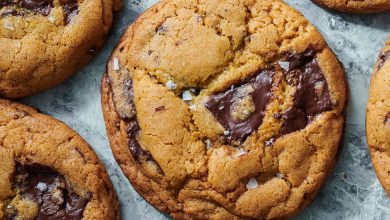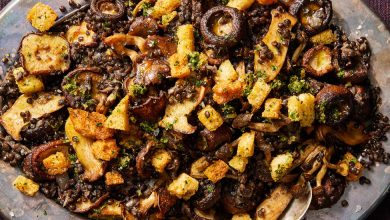The Pavlova Begs for Improvisation

In 1905, the prima ballerina Anna Pavlova premiered a solo ballet created just for her, “The Dying Swan,” which she would go on to dance about 4,000 times before her death in 1931.
“It was a combination of masterful technique with expressiveness,” Michel Fokine, the piece’s choreographer, said of his composition in a 1931 interview for Dance Magazine. Mr. Fokine called the groundbreaking work “almost an improvisation.”
It is with the improvisational spirit of Pavlova’s performance that I approach my Pavlova (the meringue dessert, not the dancer). Egg whites, sugar and cream are an ideal blank canvas for nearly anything — including the Oreos in my pantry, which have a bitter, chocolaty essence that I adore.
The Pavlova, named after the ballerina, is, first and foremost, an ethereal pudding (in the British sense of the word). A meringue disk topped with freshly whipped cream and fruit, the dessert dances between crispy and chewy, between sweetness and relief. Everything in life needs balance, and a classic Pavlova is a paragon of balance.
If you’ve ever attempted a Pavlova at home, then you know that the joy of making one comes from how its shape turns out differently every time. There is no assigned pan, just the free-form expanse of your imagination. Some like to draw a circle on parchment as a guide. But try this instead: Give in to the billowy, mercurial nature of the meringue’s natural movements. Let it fall where it falls. After all, it’s not cake; it’s Pavlova.
What makes a Pavlova especially delightful is the way a majority of its volume comes from air, which is beaten into the egg whites and sugar until they become thick and voluminous, like Marshmallow Fluff. This snowy mound dolloped into a very loose, amorphous round with peaks and swirls is baked low and slow until crackled and crisp at the edges. As the meringue cools on the counter, it deflates, creating Pavlova’s quintessential chewy center.
A standard Pavlova — in the New Zealand and Australian traditions — comes with juicy fruit on top. Sweet-tart strawberries, kiwis and passion fruit are all fair game.
But here, the meringue leans into the nostalgic taste of cookies and cream. Oreos not only lend that teeter-totter of milky filling and bittersweet wafers, but they also keep the center of the meringue moist and fluffy. The Oreo “creme,” coupled with the moisture in egg whites, softens the crisp, cocoa-dark cookies into gooey pockets of chocolate.
Fans of the marshmallows in Lucky Charms cereal will delight in this four-ingredient Pavlova, whose flavor is reminiscent of those hearts, stars and horseshoes. Offsetting the meringue’s sweetness is a crown of whipped cream — like the milk you drink at the end of a bowl of cereal.
If chocolate sandwich cookies aren’t your thing, then maybe your meringue base is streaked with peanut butter or dusted with freeze-dried raspberries. This is your Pavlova. Express yourself in it.
Recipe: Cookies-and-Cream Pavlova
Follow NYT Food on Twitter and NYT Cooking on Instagram, Facebook, YouTube and Pinterest. Get regular updates from NYT Cooking, with recipe suggestions, cooking tips and shopping advice.



